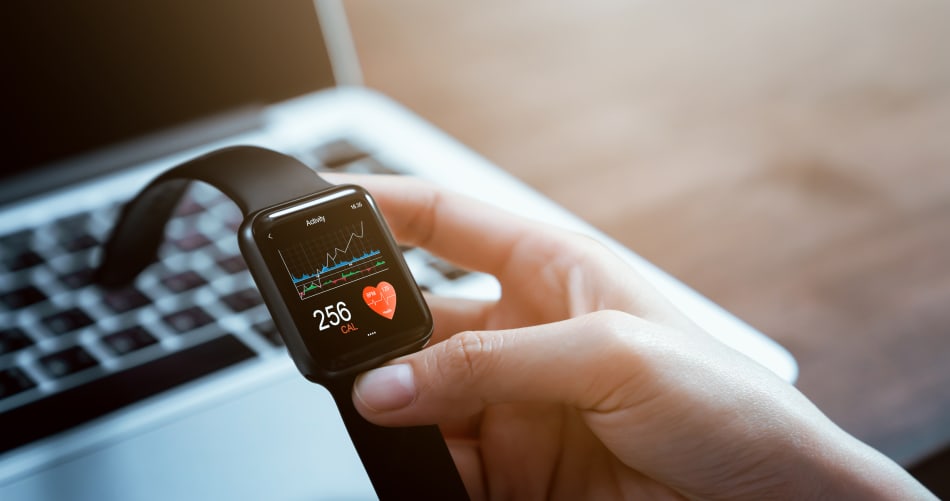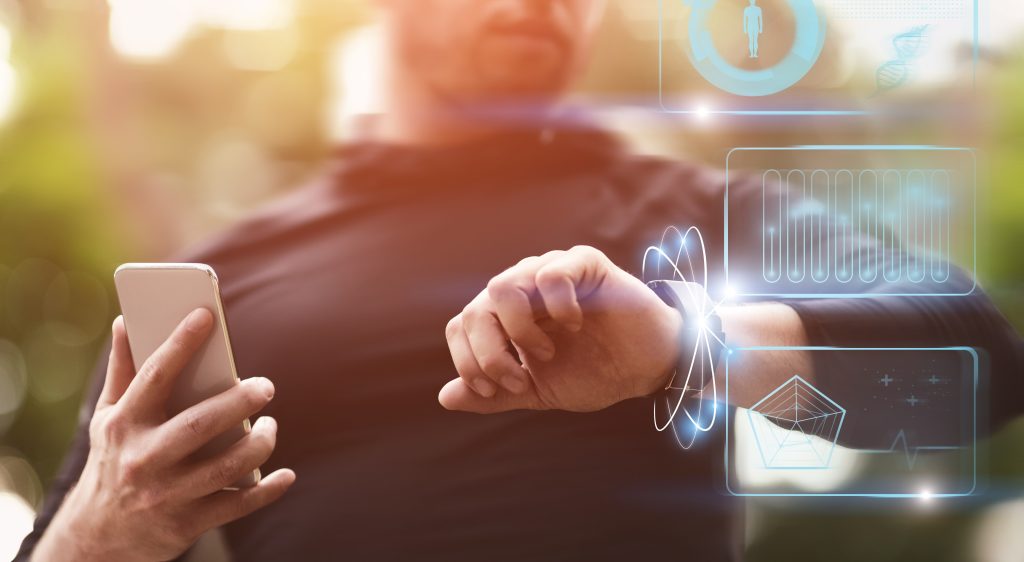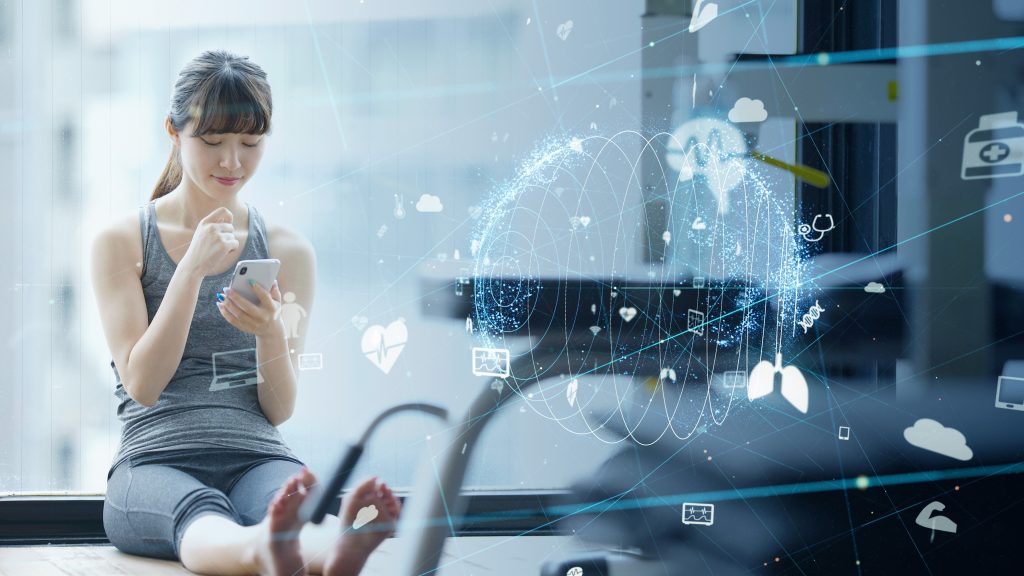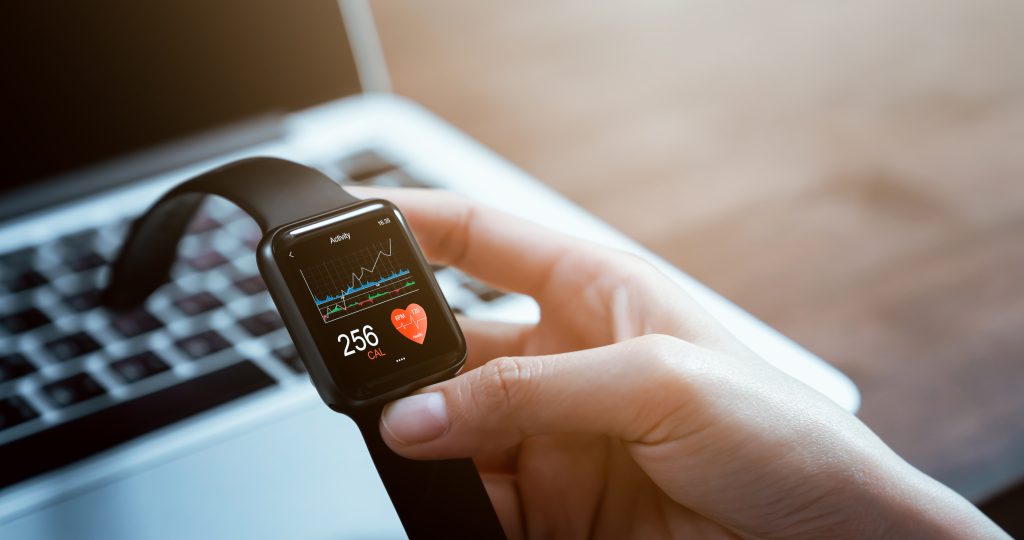
Digital drives empowerment.
Patients can now manage their wellbeing, therapies, diagnostics and more at the touch of a button. Through mobile, wearable and connected technologies, patients gain control over many medical and health-related touchpoints, encouraging personal change and producing better healthcare outcomes.
To investigate this further, we welcomed a panel of industry experts to discuss use cases, growing trends and the many ways health technology puts power in the palms of patients.
- Dr. Debbie Wake – CEO & Clinical Lead – MyWay Digital Health
- Dr. Clara Russell MBBS MRCGP – Founder – Noggin The Brain People
Check out the full event recording below.
Key Takeaways
A deeper involvement.
Conventional training teaches medics to foster a doctor-patient partnership, but, by nature, the imbalance of knowledge means relationships are often subjective and prescriptive. With the democratisation of information and ubiquity of devices, apps and platforms, patients without clinical training are empowered to understand their situation and contribute to their outcome.
Our survey indicated that 90% of respondents would be willing to use a digital tool in the treatment of an illness or injury. A significant statistical result that demonstrates the mindset of the modern patient.
Chronic disease management is a perfect example where mobile technologies can record patient readings, providing richer data sets and better outcomes while improving the use of clinical resources. Caution should be shown, however, as with so many off-the-shelf iterations available, knowing which option is best can be tricky. Regulatory bodies should provide clarity on what tech is of gold standard and prescribable.

Covid as an uptake catalyst, but what was the effect?
The COVID-19 pandemic played a substantial role in the uptake of health technology. Distancing measures drove remote therapies and consultations by requirement, though the long term benefits of this new paradigm became quickly apparent. Healthcare on-demand in the comfort of your home makes far more sense to a patient who is unwell, immobile or perhaps inaccessible.
NHS platforms and information sources saw a spike in traffic through the pandemic that has remained above pre-pandemic levels. Essentially, individuals without previous incentive to use digital health tools have had their hands forced, and their eyes opened.
The downside of this new model is the contribution to our growing social divide. Not all members of society can access the necessary hardware for these services and it is often the most vulnerable who cannot. A number of organisations operate to provide tech where it cannot be accessed, but health bodies must work to ensure all areas of the population can be provided for.

The information era.
78% of our survey respondents claimed to engage with health-related content online through websites, podcasts, social media, emails updates and discussion forums. Now, more than ever, users can access a deepening well of information from diverse resources, essentially any time and any place. This comes with a range of positives as well as negatives.
The upside is that increased knowledge grants increased empowerment. As well as contributing to existing treatments, a stronger understanding of an individual’s health leads to better life choices to remain healthy. This in turn helps avoid treatment being necessary at all. Factors such as diet, sleep, exercise and mindfulness can play a deciding factor in preventing people from becoming unwell. The more someone understands their health, the less likely they are to become a patient.
COVID-19 represents this perfectly, where the dissemination of information via online channels was crucial in the success of the public health campaign – advising the population to stay apart, stay healthy and stay safe. Our health service is currently largely reactive, treating patients when ill-health arises, but doing little to prevent its occurrence. Through communicating sound information through appropriate media, our health service may take the front foot when tackling sickness and disease.
The downside to the internet is of course that with such widespread and unregulated information sources, misinformation can be consumed unwittingly. Self-misdiagnosis is commonplace where a patient researches their symptoms and comes to the wrong conclusion. Patients may attempt home remedies or request inadvisable procedures based on information found online, highlighting the continued need for improved regulation on publicly accessed health resources.
Overall, however, more accessible information has a net positive effect.

Questions about data security?
When asked about concerns about using health technology, several respondents flagged data privacy as an issue. Interestingly, users have minimal issues with sharing personal data with social media companies but are hesitant to share with firms using their data for health purposes.
Dr. Russell pointed out that the experiences are entirely different. Sharing data with social media grants an immediate return that is fun, lighthearted and engaging, whereas sharing data for a process unknown to the user can be daunting, especially in the context of ill-health.
Dr. Wake supplemented, describing a gradual process as trust begins to grow and how users may require education and support through their usage of technologies. Consumers may not always fathom that data governance policies are often so strict that it hinders therapeutic advancements in areas such as artificial intelligence and machine learning that may positively impact people’s lives.
As time goes on and the positives are better understood, hesitations will likely diminish.

Tech that saves lives.
While 68% of respondents claimed to be happy to take readings on a digital device, only 49% were happy to self-diagnose an illness – even on a clinically approved digital tool. With early diagnosis correlating with improved prognosis, how can medical services help patients get the most out of their tech?
The answer is through education and adjustment. Consumers are already growing accustomed to machine learning and artificial intelligence playing roles in their everyday lives. As understanding of their uses, accuracies and capabilities grows naturally over time through use and communication, trust will grow and so will uptake.
User-facing tech has life saving capabilities both pre, and post-diagnosis. While fitness bands and smartwatches may be unlikely to directly reduce morbidity rates, the wider improvement of an individual’s health will certainly have upstream attribution to improved clinical outcomes. In the management of diseases such as diabetes, blood glucose monitors that connect to smartphones have undoubtedly saved lives by preventing patients going into hyperglycemic or hypoglycemic shock.
In summary, while work may be needed for regulation and refinement, digital tools providing information, visibility and control are granting empowerment and are helping patients to help themselves.
–
If you’d like to learn more about the health technologies transforming the patient experience as we know it, check out our whitepaper: Digital solutions that are re-imagining the patient experience
–
Waracle are a team of industry-leading specialists providing digital solutions in mobile, web and emerging technologies for many world leading healthcare organisations. If you have a program of work in mind, we are on hand to bring it to life. Check out what we do in Digital Health, and find out how our expert team can help.





